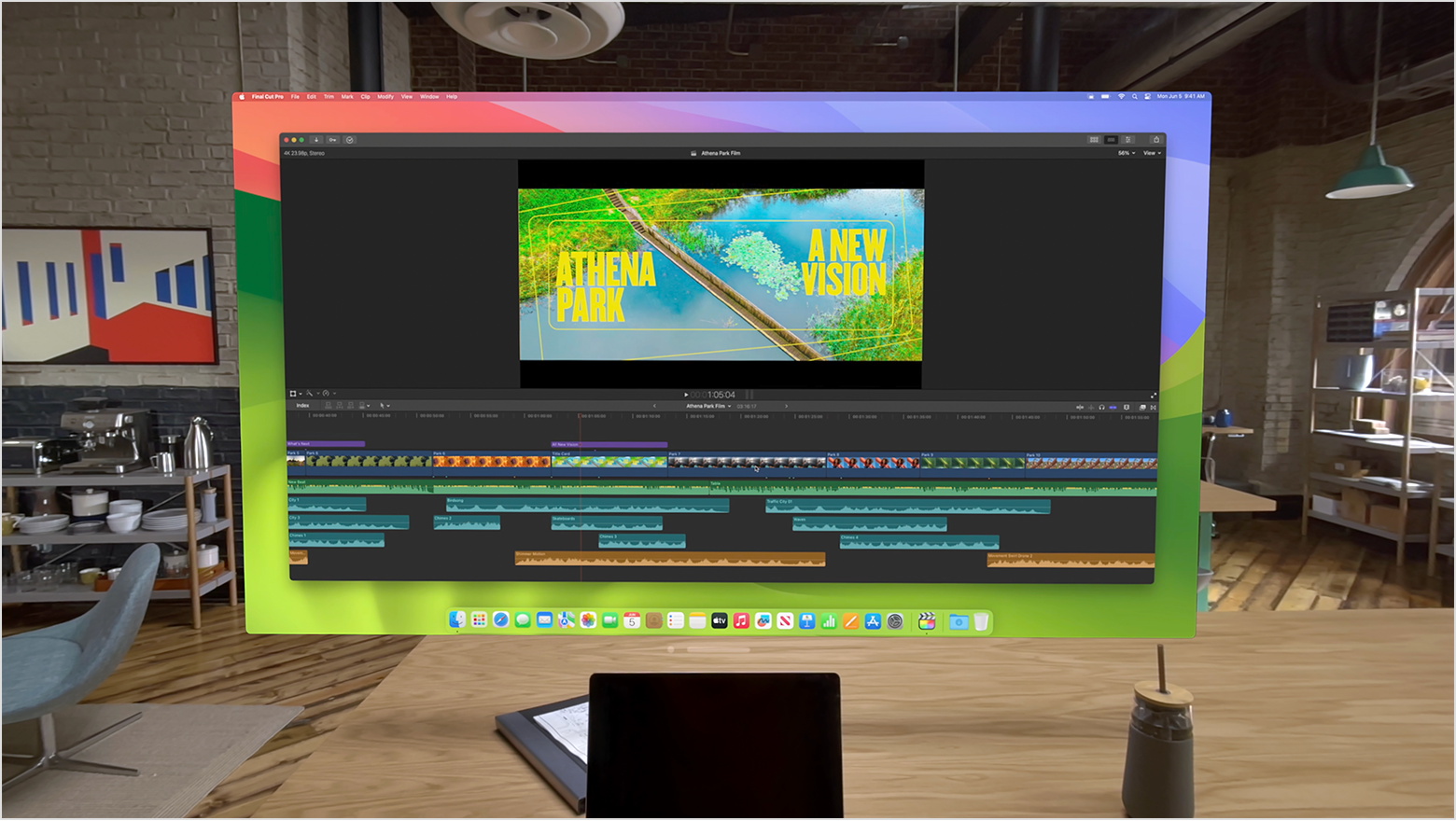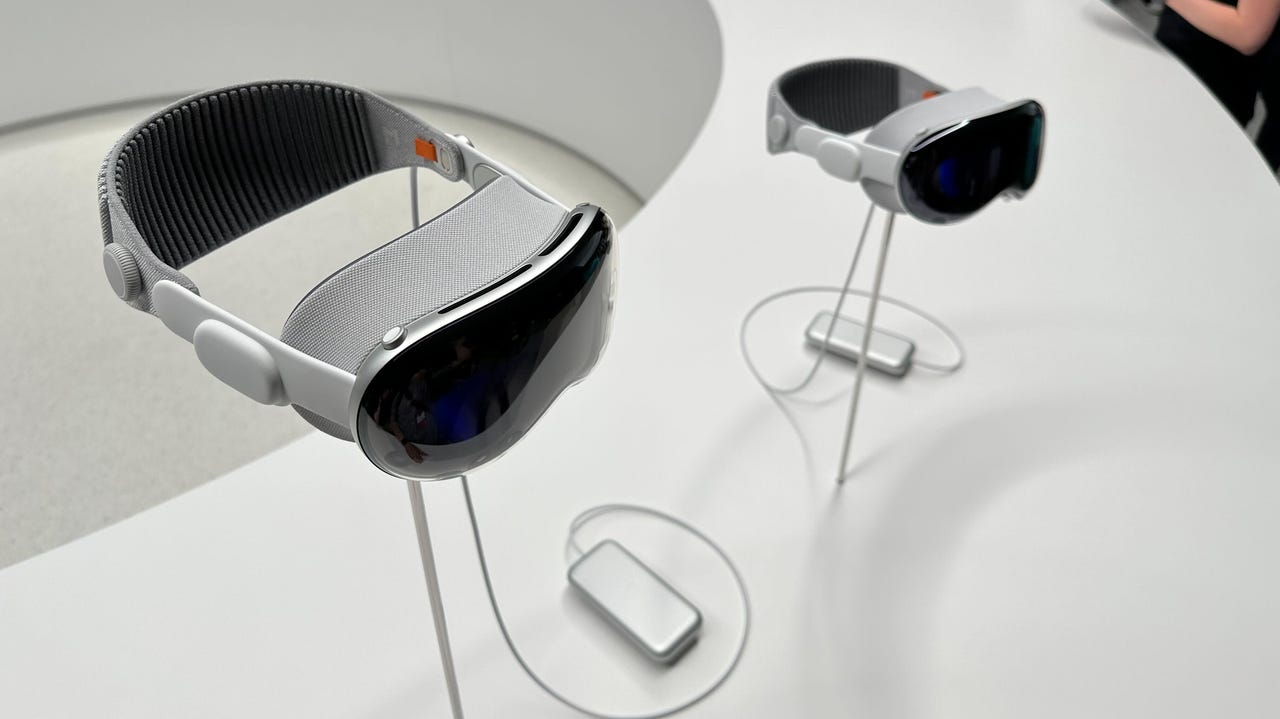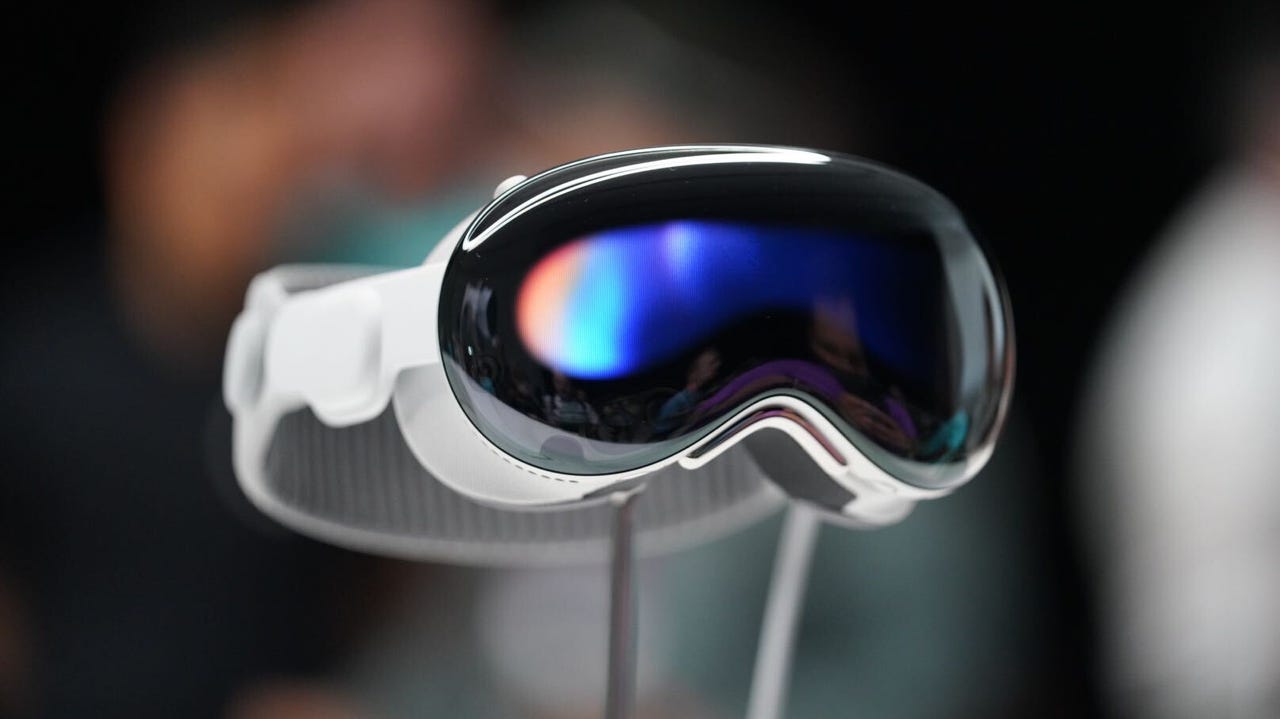Apple Vision Pro 2024
Apple Vision Pro, Apple’s new Vision Pro headset, release date 2024
apple vision pro, Apple’s new Vision Pro headset, release date Apple Vision Pro will be available starting at $3,499 (U.S.) with 256GB of storage. Pre-orders for Apple Vision Pro will begin on Friday, January 19, at 5 a.m. PST, with availability beginning Friday, February 2
apple vision pro
Use your Mac with Apple Vision Pro
Learn how to use Apple Vision Pro as a private, portable 4K display for your Mac with Mac Virtual Display.
Before you begin
First, make sure your Mac meets the system requirements. You can use Mac Virtual Display with any Mac that has macOS 14 Sonoma or later.
Then, check these things on your Mac and your Apple Vision Pro:
- Sign in on both devices with the same Apple ID, and make sure your account has two-factor authentication turned on.
- Turn on iCloud Keychain on both devices. On your Mac, go to System Settings > [your name] > iCloud > Passwords & Keychain, then turn on Sync this Mac. On your Apple Vision Pro, go to Settings > [your name] > iCloud > Passwords & Keychain, then turn on Sync this Apple Vision Pro.
- Make sure both devices have Wi-Fi and Bluetooth turned on.
Start a Mac Virtual Display session
If you have a compatible Mac laptop, you can begin a Mac Virtual Display session by looking at it. If you have a Mac desktop, start by opening Control Center.
On your Mac laptop
- Make sure that your Mac laptop is open and its display is active.
- While wearing Apple Vision Pro, look at your Mac laptop.
- Tap the Connect button that appears in your view above your Mac laptop.
If you don’t see the Connect button above your Mac laptop, follow the steps in the next section.
On your Mac desktop computer
- Look up, then tap
 near the top of your view to open Control Center.
near the top of your view to open Control Center. - Tap the Control Center button
 to see more options.
to see more options. - Tap the Mac Virtual Display button
 .
. - Select your Mac from the list that appears.
Using Mac Virtual Display
When your Mac connects, its display appears as a window in Apple Vision Pro. Just like with all windows in your Apple Vision Pro workspace, you can pinch and drag the window bar that appears at the bottom of the window to move your Mac display and arrange it closer or farther away in space. You can also resize Mac Virtual Display by pinching and dragging the window bars that appear at either bottom corner of the window.
Use your Mac computer’s built-in keyboard and trackpad, or its connected Bluetooth keyboard and trackpad, to work on your Mac within Apple Vision Pro.
While you’re using Mac Virtual Display, sounds from your Mac (such as notifications) will continue to come from your Mac, not from Apple Vision Pro.
Mac displays and resolution
If your Mac has multiple displays connected to it, Mac Virtual Display shows only the one that you’ve set as the main display.
If you have a Mac with Apple silicon, it can appear in Apple Vision Pro at resolutions up to 4K. If your Mac has an Intel processor, it can appear at resolutions up to 3K.
To adjust the resolution of your Mac display in Apple Vision Pro, go to the System Settings app on your Mac, click Displays, then choose from the available resolutions. To see more sizes, turn on Show all resolutions.
Use your Mac input devices to control Apple Vision Pro apps
When you’re in a Mac Virtual Display session, you can use your Mac computer’s built-in keyboard and trackpad, or its connected Bluetooth keyboard and trackpad, to control Apple Vision Pro apps and content inside the Mac Virtual Display.
First, make sure that your Mac is set up right:
- On your Mac, open Settings > Displays.
- Tap Advanced.
- Turn on Allow your pointer and keyboard to move between any nearby Mac or iPad.
Now you can move your Mac pointer out of the Mac Virtual Display window into other Apple Vision Pro windows, where you can use it to scroll and select items.
End a Mac Virtual Display session
When you’re finished, tap the close button at the bottom of the Mac window to disconnect from your computer.

An Apple VR/AR headset has been rumored for over six years, and it is finally here. Eight months after Apple announced the Vision Pro at WWDC, the headset is shipping to customers. The highly anticipated headset is meant to take mixed reality experiences to the next level.
In the meantime, Apple, from Tim Cook on down, has largely insisted that augmented reality will be much more valuable than virtual reality. And it’s been building toward AR for a long time: developers have access to AR tools in iOS, and higher-end iPhones and iPads have had lidar depth scanners for a few years now.
The Vision Pro is Apple’s first attempt at building a computer out of all those ideas — a computer that works in the space around you. The goal is for the Vision Pro to be a complete device that can sit right alongside the Mac and the iPad in Apple’s ecosystem of devices and let you get real work done. You can use Excel and Webex and Slack in the Vision Pro, and you can also sit back and watch movies and TV shows on a gigantic virtual 4K HDR display. And you can mirror your Mac’s display and just use the Vision Pro to look at a huge monitor floating in virtual space.
Apple has gone as far as claiming that the Vision Pro is the “most advanced personal electronic device ever. Pre-orders for the device began on January 19, and — despite its steep price point starting at $3,499 — Apple already sold 200,000 units in the first ten days, according to insider insight shared with MacRumors.
This begs the question: Is the Vision Pro worth the price? Here is everything you need to know about the company’s newest product, including specs, functionality, and some insights from ZDNET editor-in-chief Jason Hiner’s own hands-on experience.

The Vision Pro is stunning compared to other VR headsets, which are largely plastic and often downright goofy-looking. The Vision Pro, by contrast, is built of magnesium and carbon fiber in an aluminum enclosure that feels like a natural extension of Apple’s familiar design language. There’s a little iPhone 6 in there, a little AirPods Max, a little Apple Watch. It is the cutting edge of technology in a package that seems instantly familiar. Almost everyone I’ve shown it to thinks it looks smaller in person than they expected, especially compared to some of the huge VR headsets we’ve seen over the past decade.
The front display on the Vision Pro is an attempt at keeping you from being isolated from other people while you’re wearing it. In Apple’s photos, it looks like a big, bright screen that shows a video of your eyes to people around you so they feel comfortable talking to you while you’re wearing the headset — a feature adorably called EyeSight. In reality, it might as well not be there. It’s a low-res OLED with a lenticular panel in front of it to provide a mild 3D effect, and it’s so dim and the cover glass is so reflective, it’s actually hard to see in most normal to bright lighting. When people do see your eyes, it’s a low-res, ghostly image of them that feels like CGI. The effect is uncanny — the idea that you’ll be making real eye contact with anyone is a fantasy. And there are no controls or indicators in visionOS for this external display, so you never really know what other people are seeing. Imagine looking someone directly in the eyes and talking to them without knowing if they can see your eyes — it’s weird!
Vision Pro look?
The design of the Vision Pro differs from many existing AR/VR headsets. For example, the device has an external battery pack that resembles the size of an iPhone and connects to the headset via a cable.
Therefore, a user would have to place the battery in their pocket and deal with a dangling cable when using the Vision Pro.
By having a tethered battery system, Apple was able to reduce the weight of the Vision Pro headset to make it noticeably lighter than the competition. This, according to Apple, should solve one of the biggest issues with VR headsets: discomfort after extended use.
The look of the Vision Pro itself resembles ski goggles, and its curved front has an external screen that allows the wearer’s eyes to be seen when approached by others through a feature called EyeSight.

The front of the headset is made from three-dimensionally formed, laminated glass that connects to a custom aluminum alloy frame. The Light Seal, made of soft textile, and the three-dimensionally knitted HeadBand come in a range of sizes to provide maximum comfort.
That cover glass hides a huge array of cameras and sensors. There’s a pair of high-res front cameras for the video passthrough, cameras that face down and to the sides to track your hands, a lidar scanner and TrueDepth cameras for spatial tracking, and infrared floodlights so everything can work in low light. Underneath all that, you’ve got an M2 processor and Apple’s new R1 spatial coprocessor and a pair of fans to move the heat from all this tech out the top. The fans were never perceptible during my time testing the Vision Pro, but the heat was: after long sessions, the headset was definitely warm.
On the top edge, you’ll find what feel like larger versions of some familiar Apple Watch controls: a digital crown that adjusts both the volume and the level of virtual reality immersion on the right as you look through the headset and a button on the left that lets you take 3D photos and videos.
You get two headbands in the box: the solo knit band and the dual loop band. They both attach and detach easily; you snap them right on and then pull the little orange tab to disconnect them. The solo band is unquestionably cooler and messes up your hair slightly less — but they both mess up your hair, so if the dual loop fits you better, just go with it. I found the solo loop much more comfortable; I also wish the mounting points were on the outside face so I could pull the band around my head and clip it on instead of constantly pulling it over my hair.
The device features two OLED displays that together pack a total of 23 million pixels (more than a 4K TV for each eye), Apple’s M2 chip, 12 cameras, five sensors, six microphones, and the popular voice assistant, Siri. It also features the brand-new R1 chip, which runs in parallel with the M2 chip to ensure that there is no lag.
The headset has two individually amplified drivers inside each audio pad to power its Personalized Spatial Audio, which personalizes audio for a user based on their head and geometry. To switch between AR and VR, the headset will have a crown similar to the one found on the Apple Watch. There is also a knob that will allow users to easily customize the fit and a button on top of the headset to take photos. Users will be able to control the headset with eye and hand tracking, a feature that’s slowly being adopted by other headsets on the market, as well as voice commands. For example, users will be able to pinch to select and flick to scroll.
Vision Pro runs on a new Apple operating system, VisionOS, which resembles the iPadOS interface, bringing the continuity of Apple’s apps and services ecosystem to the headset. This operating system was created specifically to support spatial computing.
The headset is capable of running popular Apple applications, including Books, Camera, Contacts, Facetime, Mail, Maps, Messages, Music, Notes, Photos, Safari, and more in mixed reality — a blend of both AR and VR. It is also launching with 600 new apps built for the headset including Zoom, Microsoft 365, Slack, Todoist, and more.
According to Apple, the apps will feel like they are in your natural space and environment. As a result, moving apps is similar to moving actual items around you. In his hands-on demo write-up, Jason Hiner shared that by the end of his 30-minute demo, moving objects became second nature.
TAGGED: –
- 2024
- one-day news
- new news
Google
- Apple Vision Pro release date
Use your Mac with Apple Vision Pro
- Before you begin
- Start a Mac Virtual Display session
- On your Mac laptop
- Using Mac Virtual Display
- Mac displays and resolution
- On your Mac desktop computer
- Use your Mac input devices to control Apple Vision Pro apps
- End a Mac Virtual Display session
- Vision Pro look?
- Mac
- apple

कोई टिप्पणी नहीं:
एक टिप्पणी भेजें